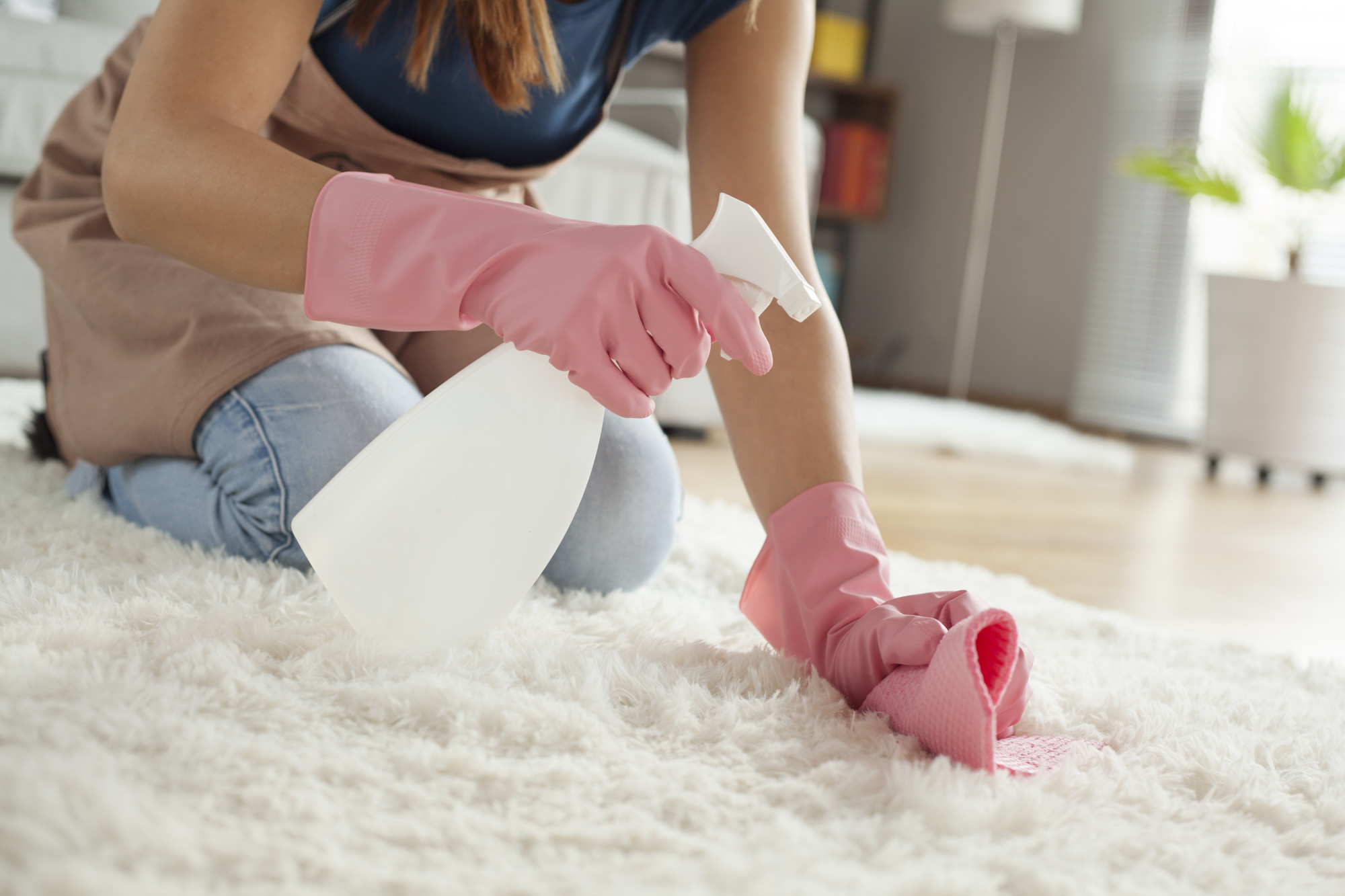Who would have thought that the simple process of cleaning your rug could contribute to environmental issues? It’s a harsh reality, but becoming aware of this is the first step towards improving our habits and mitigating our environmental footprint. So, we invite you on a journey to uncover the eco-challenges tied to rug cleaning and how we can address them.
Rug Cleaning Industry Overview
What might surprise you is that the rug cleaning industry is an extensive one. With the popularity of rugs in private residences and commercial facilities alike, cleaners are in high demand. However, the techniques and substances used are not always environmentally friendly, hence creating room for improvement.
Nowadays, there’s an increasing interest and focus on green cleaning methods. Many companies worldwide have already integrated eco-friendly practices into their services. If you’re curious about such a company, explore this website
In the rug cleaning industry, a shift towards embracing more renewable resources is crucial in decreasing its carbon footprint. Change doesn’t happen overnight indeed, but with consistent efforts, it can lead to meaningful results.
With this trend continuing to grow, the rug cleaning industry finds itself at a crossroads: stick with traditional, impactful techniques or pave the way for greener alternatives. The decision essentially lies in our hands.
Environmental Concerns in Rug Cleaning
The environment bears the brunt of many industrial activities including rug cleaning. Cleaning agents with high chemical content can release toxic gasses into the atmosphere once they’re used. Also, non-biodegradable materials from these agent packages litter our environment and pose risks to marine life when dumped carelessly.
Water usage is another concern. Clean rugs might make us feel good about our spaces, but the water used or wasted in the process has grave implications. Rivers and natural water sources get diminished, especially during drought seasons.
Also concerning is the energy consumed in these processes. Large scale operations require significant energy resources to clean, dry, and transport the rugs. High energy consumption contributes to higher greenhouse gasses, propelling climate change.
It’s a formidable list of concerns. However, it’s important to stress that these issues can be mediated or even resolved with commitment and innovation.
Chemical Usage in Rug Cleaning
Of all environmental concerns linked with rug cleaning, chemical usage raises major red flags. Cleaning solutions are usually composed of chemicals that make them effective against dirt. Some of these chemicals include pesticides and disinfectants, which are harmful to both humans and the environment.
You’ve probably heard of VOCs (Volatile Organic Compounds). These harmful substances evaporate into our atmosphere from cleaners, contributing significantly to air pollution. This doesn’t only affect outdoor air quality but also harms indoor air, making your living spaces unhealthy.
A solution lies at hand though – green cleaning alternatives. Green rug cleaning uses biodegradable materials that pose no risk to the environment while ensuring effective cleaning. While they might cost a little more, they provide immense value by protecting our environment.
The Institute of Inspection Cleaning and Restoration Certification (IICRC), an industry-standard organization, advocates for such sustainable practices. By following their guidelines, companies can minimize their environmental impact while still providing top-notch service.
Water Waste Issues
The rug cleaning industry is guilty of using substantial amounts of water. Traditional cleaning methods consume a lot of water through soaking, rinsing, and waste disposal. This unsustainable consumption adds to the challenges of water scarcity across the globe.
Do we throw in the towel? Not at all. We can address this issue with water-efficient cleaning methods. Steam cleaning, for instance, uses less water compared to other methods and is equally effective.
Also, water recycling systems now exist that can drastically cut down water usage. Equipped with advanced filtration technology, they can clean and recycle the used water for reuse. Investing in such systems is not only cost-effective but kind to our planet.
Water conservation isn’t an option but a necessity. By adopting methods that save water while still achieving ideal cleanliness, the rug cleaning industry can play its part in environmental conservation.
Energy Consumption in Rug Cleaning
Let’s talk about energy consumption – another cog in the wheel of the rug cleaning industry’s environmental impact. It’s not just about the energy used for cleaning; transportation also plays a significant role. Truck-mounted cleaning units consume high volumes of gas while releasing CO2 into the atmosphere. Meanwhile, equipment like dryers and vacuums also require substantial power.
At this point, there appears to be a consistent narrative – change is necessary. As consumers, we have a role to play by supporting companies that emphasize energy efficiency. Opting for local cleaners who use energy-efficient equipment can drastically reduce carbon emissions.
Also, green cleaning companies are increasingly implementing solar-powered equipment and transitioning towards electric fleet vehicles. This is where technology meets sustainability and proves invaluable for our planet.
Eco-Friendly Rug Cleaning Alternatives
Preparing for a more ecologically balanced future, the provision of eco-friendly alternatives has become paramount. In the rug cleaning business, this has resulted in the development and promotion of green cleaning solutions. These are formulated from natural ingredients, ensuring their non-toxicity.
Apart from being safer to use, these solutions are also gentler on rugs, increasing their longevity and appearance. Notable products include plant-based cleaners that feature ingredients like citrus or eucalyptus. These offer effective cleaning while infusing a pleasant aroma in cleaned rugs.
Besides the cleaning agents used, there are other technologies that support sustainable rug cleaning. One such technology is dry cleaning. Rather than using gallons of water on every rug, these machines employ microscopic sponges soaked in green detergent.
This results in far less water usage while efficiently removing dirt and stains. The low moisture levels also translate into shorter drying periods, which reduces energy consumption.
Impact of Green Certifications
Today’s eco-conscious consumer is interested in more than just price and quality; they value sustainability as well. Insights into the steps a company takes to lower its environmental impact can shape consumer trust and brand perception. Enter green certifications – a testament to a company’s dedication towards eco-friendly practices.
Green Seal and EcoLogo are notable organizations offering such certifications. These accreditations validate a company’s commitment to lowering their environmental impact throughout their business operations.
The criteria for certification typically covers a wide spectrum – from product formulation to manufacturing processes down to waste management methods. For instance, certification by Green Seal involves scrutiny of a product’s life cycle starting from raw material extraction till disposal.
Future Trends in Eco-Friendly Cleaning
Evolving technologies used by the Rug Wash Specialist and others are shaping future trends in rug cleaning. From advanced equipment powered by renewable energy to biodegradable cleaning agents, the future looks promising.
The advent of smart technology is resulting in machines that operate more efficiently, optimizing resource usage. These high-tech devices can adjust to different rug materials or soiling levels, ensuring no unnecessary water or energy is wasted.
There’s also a rising emphasis on circular economy principles. Companies are considering options for recycling rugs at the end of their life cycle rather than defaulting to landfilling. Rug materials can then be repurposed, further minimizing environmental harm.
All considered, these growing trends help prepare the groundwork for a greener and more sustainable future in rug cleaning.
In Conclusion
Sustainable practices in the rug cleaning industry are currently as necessary as they are achievable. By opting for eco-friendly alternatives, obtaining green certification, adhering to industry standards and keeping an eye on future trends, it is possible for the sector to significantly mitigate its environmental impact.
While these solutions require considerable effort and commitment, the rewards – both ecological and business-wise – make it a worthwhile endeavor.




